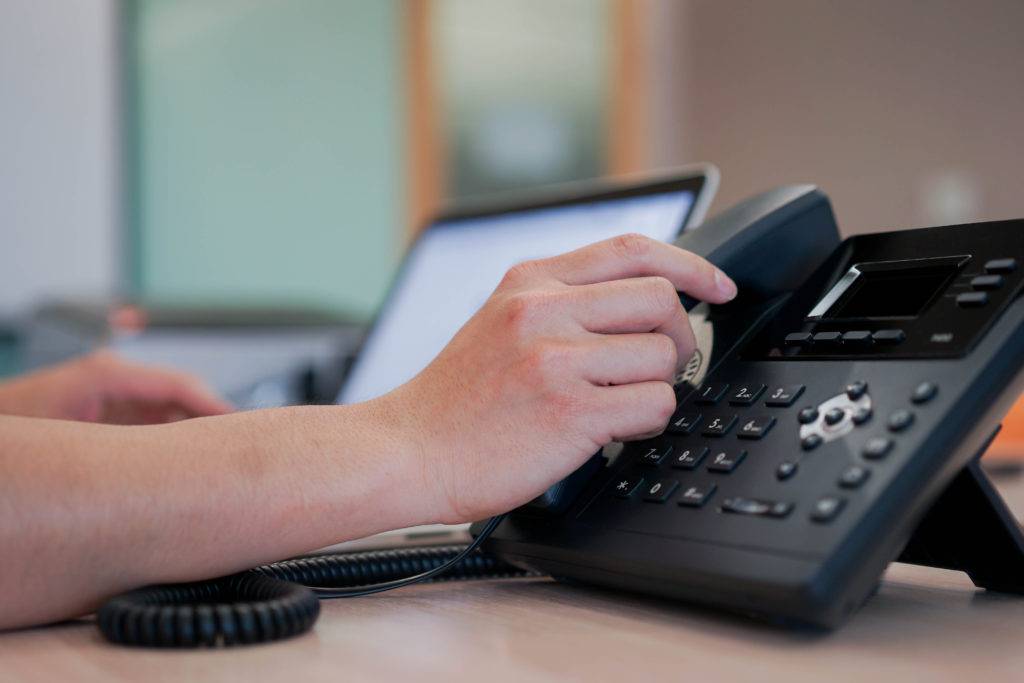
How Can a SIP Number Benefit Businesses
SIP Number Calls and Traditional Calls: Are They the Same?
Business communications can be more reliable with a SIP number, but what exactly is it, and what can it do for you? The first thing you need to know is that SIP stands for Session Initiation Protocol. It is a signaling protocol used to initiate, connect and terminate communications (such as telephone calls) between two or more parties. IP telephony uses this well-known concept very often.
SIP works with the Internet to deliver communication sessions during a call. In this sense, it’s a more reliable option to connect with other parties. A SIP call utilizes SIP channels or trunks to transmit a voice or video signal.
SIP is commonly confused with VoIP, but there is also a difference between the two: SIP calls utilize VoIP via a high-speed Internet connection to deliver analog signaling.
In contrast, traditional business phone systems typically consist of two components:
- Private Branch eXchange (PBX), which provides call management, voicemail, and auto attendant.
- Primary Rate Interface (PRI) connects calls to the Public Switched Telephone Network (PSTN), from which they are sent to the destination phone number.
As soon as you switch to a SIP number, your IP-enabled PBX connects to your data network instead of your PRI lines. So, voice traffic travels through the Internet to reach the PSTN.
The interface SIP numbers use is relatively simple, offering a straightforward method of managing the entire phone system (including extensions, additional phone lines, and call routing). Many companies choose to use it to improve conference calling, for instance.
In conclusion, is a SIP number the same as a legacy telephone number? Although the technology is different, for all practical purposes, the answer is – yes, only SIP numbers are better. Understanding why requires a bit of background about SIP telephony you can review next.
Related: How does a SIP trunk work?
What Do SIP Phone Numbers Look Like?
SIP-enabled phones can have 10-digit phone numbers, just like ones operating over legacy phone lines. In fact, in most cases, customers can port their existing phone numbers to a new SIP number.
Phone numbers can serve as main lines with as many channels as needed or dedicated to individual phones or other destinations through direct inward dialing (DID). Dialing to or from a SIP number is exactly the same as dialing a traditional line.
How Do SIP Number and Traditional Number Features Differ?
Conventional line features are generally available for SIP numbers as well. These include caller ID and caller ID with name (CNAM) where available. SIP phones can also be configured with “nomadic e911” so that emergency operators can visualize the caller’s address in the same way they do with fixed lines. More on these benefits in the following section.
The best SIP services offer features that go way beyond what is available from local phone lines, including call detail records, online administration, and automated backup routing in case of a PBX failure, for instance.
Related: PBX and SIP: Learn the Basics
Why Do Businesses Choose a SIP Number?
SIP trunking is taking over the business world. By 2030, the global market for SIP trunking services could grow at a rate of 13% annually and could be worth $35.5 billion. What impact does this technology have on company communication?
SIP numbers and SIP technology enable day-to-day communications such as chats, voice calls, and video calls, but most people are not aware of it. So much so, that many businesses are even overall uninformed about what SIP services are and how they can benefit from them.
To simplify some of the fundamentals of SIP trunking without causing confusion or using more undefined jargon and acronyms, let’s outline some of the primary reasons for companies to make the switch.
Reason #1: It’s more available and reliable
With this technology, your organization can ensure customers and other external parties can contact you promptly. You should focus on providing responsive customer service as well as excellent communications within your business and SIP lets you accomplish that. Recent studies found that 92% of consumers would stop buying from a company if they had three or fewer negative customer service experiences.
Traditional phone lines’ service can be interrupted by weather disruptions (which usually take several days to fix) or power outages, but SIP trunks don’t. When you choose a SIP number, it uses the Internet and can keep backups available so that you are never offline too long, even if your connection or service goes down.
Reason #2: It costs less
By using SIP trunking, you can eliminate the need for PRI lines and their associated costs. While PRI lines come with 23 channels, you can order SIP trunks in increments of one channel (equal to one simultaneous call). Your businesses can, therefore, buy and pay for only what you need, and quickly scale your capacity as demand changes.
The technology uses analog adapters or “SIP-to-T1 gateways.” This may be useful if your company wants to keep its existing PBX equipment and take advantage of lower telecom costs.
Reason #3: It offers a variety of features
SIP-based calls are available both domestically (to US destinations) and internationally (to Canada and Europe, for instance). A premium provider will implement even more features such as call forwarding, e-mail voicemail, and caller ID for no additional charge.
Finding the Best SIP Benefits Provider
The SIP business is growing rapidly, so expect many of the top players in the market to boast about their services. But only true industry leaders can offer more features for your company, such as:
User-friendly control panel
Your account settings can be easily managed via a straightforward and convenient platform in which you can simply add or delete phone numbers, change services or discontinue them and keep track of your call history in real-time.
All traffic welcome
Depending on your business requirements, your top provider will work with all types of upstream carriers to receive traffic.
Call data records available in real-time
Leading SIP providers will offer you access to downloadable data records that will help you analyze your communications history.
DID coverage available
As mentioned above, DID allows you to instantly order local and international numbers by exploring easy-to-search databases. This service will be available with SIP providers that offer comprehensive services.
Bring your own bandwidth
You’ll be able to select the broadband Internet provider you want when you partner with an agnostic SIP vendor.
International toll fraud protection
The real-time security tools in this feature prevent and detect international fraud in real-time.
Nomadic e911
The service will allow you to assign a valid USPS address to any phone number in the United States. When dialing 911 in the event of an emergency, this feature displays the specific address to the emergency response operator.
Fault-tolerant DID routing
You can route inbound DID calls to a primary and a secondary IP-PBX.
No obligation free trial
Only the leading SIP trunking provider will offer a free trial with outbound calling minutes available to anywhere in the nation so you can try their service in just a few steps.
Now that you’ve learned more about SIP numbers and how they work, why not introduce this technology to help your business communications? Activating SIP.US is quick and easy. At SIP.US, business owners can select from a range of SIP trunking options in order to improve communication and reduce costs. Our platform lets any company upgrade its legacy phone system and implement SIP trunking quickly, according to its needs. Get started.


